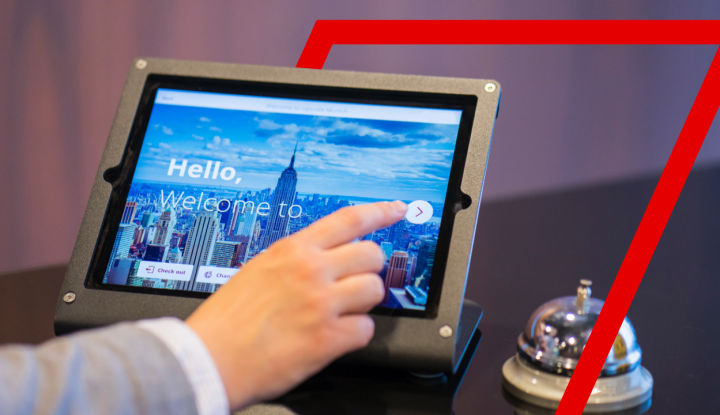With Facebook’s recent addition of virtual reality/360
(learn the difference!), there’s yet another platform for travel brands to distribute this new form of content. As each new channel is added, the appeal of investing in VR/360 content grows. A critical mass is required to justify the upfront cost — especially with an emerging platform such as VR/360 that generally requires specialized viewing equipment for maximum impact.
So will virtual reality push past these structural audience challenges to become a mainstay in travel? And in order to do so, how can the industry deploy this emerging tech to further business goals?
The Insights team caught up with Maegan Snee, who is a front-end software developer at Sabre Labs where she experiments with new technologies and their potential applications in travel. The conversation, highlighted in the indented quotes below, drifted to three core areas where VR could have a measurable impact beyond marketing: ancillaries, in-flight entertainment and hotspot-driven conversion.
Ancillaries
This is arguably part of the marketing bucket, but is worth a mention as it moves beyond marketing and into revenue enhancement. Virtual reality can be deployed as a “try before you buy” mechanism for travelers to check out a particular seat or add-on before purchasing.
Given how pervasive smartphones are, it doesn’t take an enormous effort for a traveler to pull out a headset to experience any given seat. For tall travelers or those who want to understand where specifically a seat would be on a plane, this sort of booking experience enhancement could be transformational. Even after consulting seat maps, its not always clear what the true advantages and disadvantages of a seat are.
With VR, airlines could even put you in your seat before you board the plane. So you can see if you want to spend the extra cash for a better seat, or even up to first class. That would provide extra ancillary revenue for the airlines, which is an ongoing effort that technology can help with.
This could even extend to pre-selecting a meal on a journey — rather than just a still photo, there’s a more immersive experience of the meal.
For hotels, the technology also offers a compelling first-person perspective that can push travelers towards an up-sell. An immersive first-hand view of a better room sells better than a small thumbnail.
Camera placement is also really important. In some VR clips, the camera is placed at the end of the bed. This makes it feel like you are really sitting right on the bed, looking around. It’s not just a view from the back of the room. This sort of content could also help hotels sell better rooms, while also increasing guest satisfaction since travelers can experience what they’re getting upfront.
In-flight entertainment
Qantas was the first airline to offer
virtual reality headsets to passengers. On a trial basis, first-class passengers on A380 flights from Los Angeles to Sydney were able to experience VR content in-flight.
Given the increased complexity, weight and costs involved with in-flight entertainment systems, could airlines opt for VR headsets instead? Before seatback screens were a thing, the airlines used to cart around personal viewers with tiny tapes for passengers to select. If VR catches on, it would be a full circle of sorts. And with airlines trending towards “bring your own device,” the airlines could even just offer the headset without the smartphone itself.
If the technology is fully adopted, I could see airlines even replacing in-flight entertainment systems with headsets. It’s not just a menu, so something more immersive versus the touchscreen in front of you could work well on a plane.
Qantas also loaded local destination content from See Australia, such as a VR video exploring the Kakadu National Park. Yet even with a growing selection of content, there’s still the issue of VR sickness:
The “VR sickness,” which is the feeling in your stomach if something is ever-so-slightly off, is real. Eye tracking can help with this, but the technology is just not quite there yet. Especially on an airplane, where some people may get sick without even being in a virtual reality environment, there would need to be some improvements in the technology. This is one of the biggest hurdles to overcome for nearly all applications of VR in travel.
Hotspots for the conversion
Ultimatety, for virtual reality to become a mainstay technology in travel, it needs a means of conversion. Marketing and traveler experience are two important pieces to the puzzle, but it will be hard to gain widespread industry participation if those two threads lack conversion.
As far as conversion, we think that hotspots are going to be very pertinent in booking and browsing travel.
Being able to sit on the beach and see the hotel from the beach, or look at where you want your room to be in relation to the beach. Or you could be in the lobby to visually see where the front desk is.
Each of those scenarios could offer hotspots to book a specific room or even to check-in to a hotel.
Other possible cases would be a “wish list” functionality for travelers browsing for travel inspiration, reservations for specific restaurants through StreetView, selecting a car in advance from a car rental company, or booking tours and activities for a future trip.
Future integrations might also make hotspots irrelevant. Imagine a connection with voice-enabled digital agents, such as Siri, Alexa and Cortana, that could remember the chosen selection and then book instantly, seamlessly connecting a VR experience to conversion.
You could just be in that virtual environment and then just say “Hey Alexa book this hotel for these dates.
So how much $?
Professional VR – at the level that most brands require – is not quite affordable enough for everyday purposes.
We have found that professional content from people who have the real 360 cameras or the $15,000 rigs is quite expensive: it can be about six figures for three minutes of video. That’s obviously not very affordable, especially given how many people currently have VR viewers.
To truly become a mainstay, VR-as-a-platform must prove its worth beyond being a tool in the travel marketing toolkit. Nonetheless, VR is a powerful tool, one
The common thread here is that all of these experiences still make you want to go. Virtual reality won’t likely replace travel. It’s just makes you want to go to the location more! You can’t fake a tropical environment or replace being on the beach for a day. It’s hard to replace smelling the ocean, feeling the sand between your toes and sit in the sun for the day. VR is a teaser and travel is the real thing.This isn’t something we can replace (yet!) with sitting at home!
Mark McSpadden and Maegan Snee from Sabre Labs spoke at Dallas Startup Week to discuss the current state of VR and its path forward in the travel industry.






